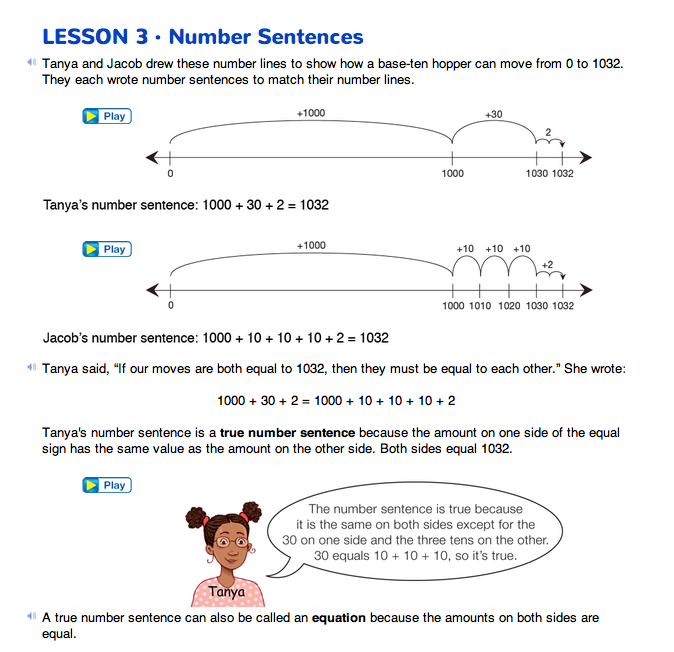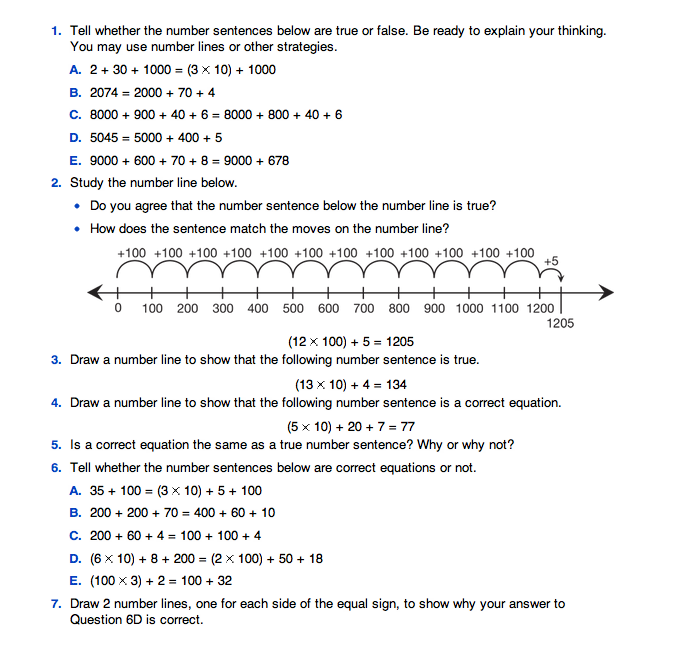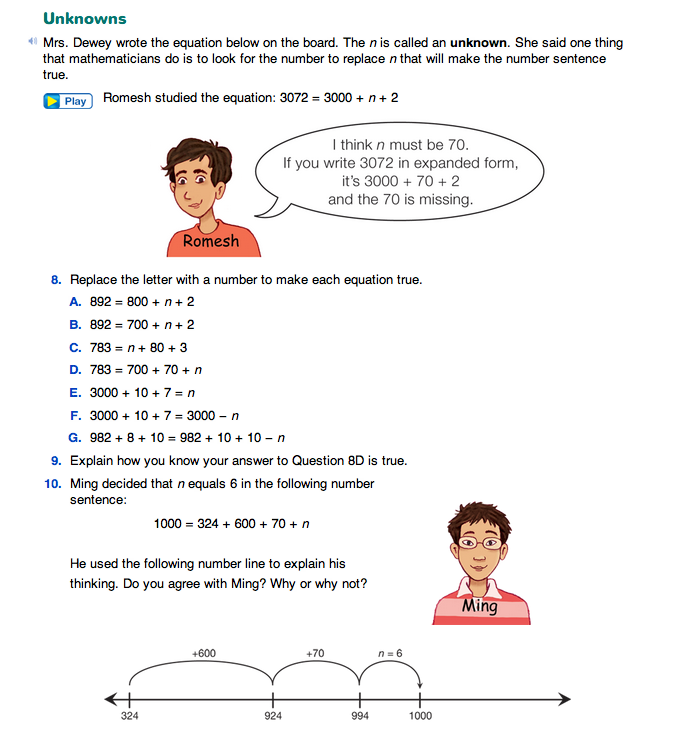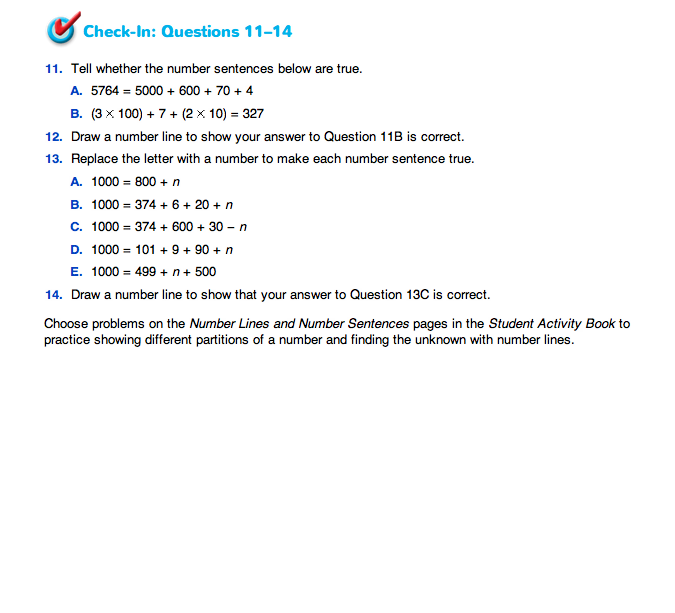Number Sentences
Est. Class Sessions: 2–3Developing the Lesson
Examine Number Sentences and Equations. Refer to the opening vignette in the Student Guide and sketch the number lines. See Figure 1.
Ask:
Discuss the term equation with the students using the vignette in the Student Guide. Ask whether it reminds them of any other word they have seen. Students should notice that the first part looks like the word equal. Tell them it is a word mathematicians use to describe a number sentence when the amounts on both sides of the equal sign are equal to each other.
Ask:
Ask students to work in pairs to complete Questions 1–7. As students work, ask them to tell you how they know their answers are correct. Use Tanya's discussion in the Student Guide as a model.
Replace Unknowns in Number Sentences. Have students read the vignette in the Unknowns section in the Student Guide. The vignette and Questions 8–10 introduce the idea of finding the value of an unknown in an equation. While this is clearly an introduction to an aspect of algebraic reasoning, students should solve the problems using their knowledge of place value and methods partitioning numbers rather than following a set of formal steps.
One method for completing the number sentences is to draw number lines to show that the values on both sides of the equation are the same. See Figure 2.
Have students work in pairs to complete Questions 8–10. One way to solve the problems is to use a counting-up strategy and a number line as shown in Ming's solution to Question 10 in the Student Guide and in Figure 3. Students can complete the problems and then compare solutions with partners.
After reviewing Questions 8–10, assign Check-In: Questions 11–14.





















